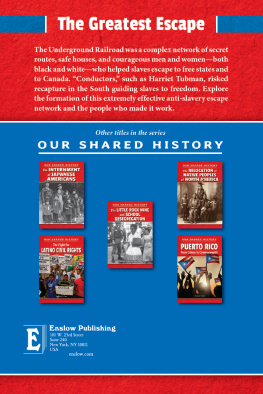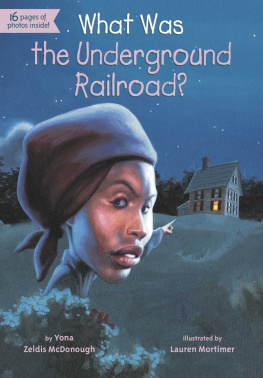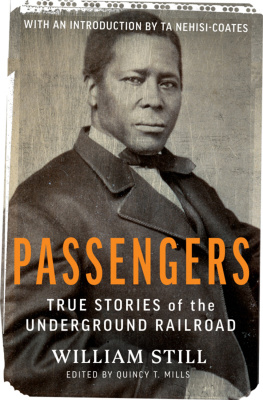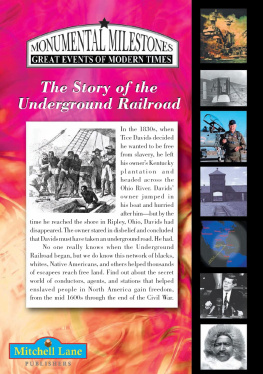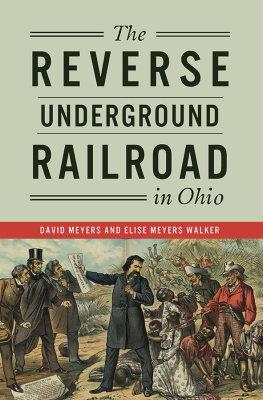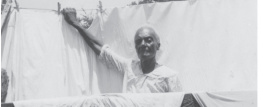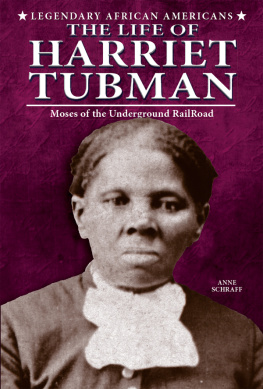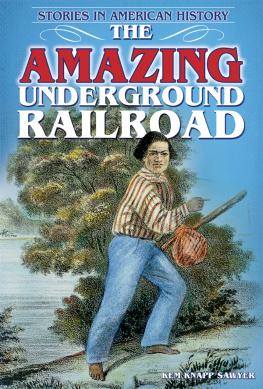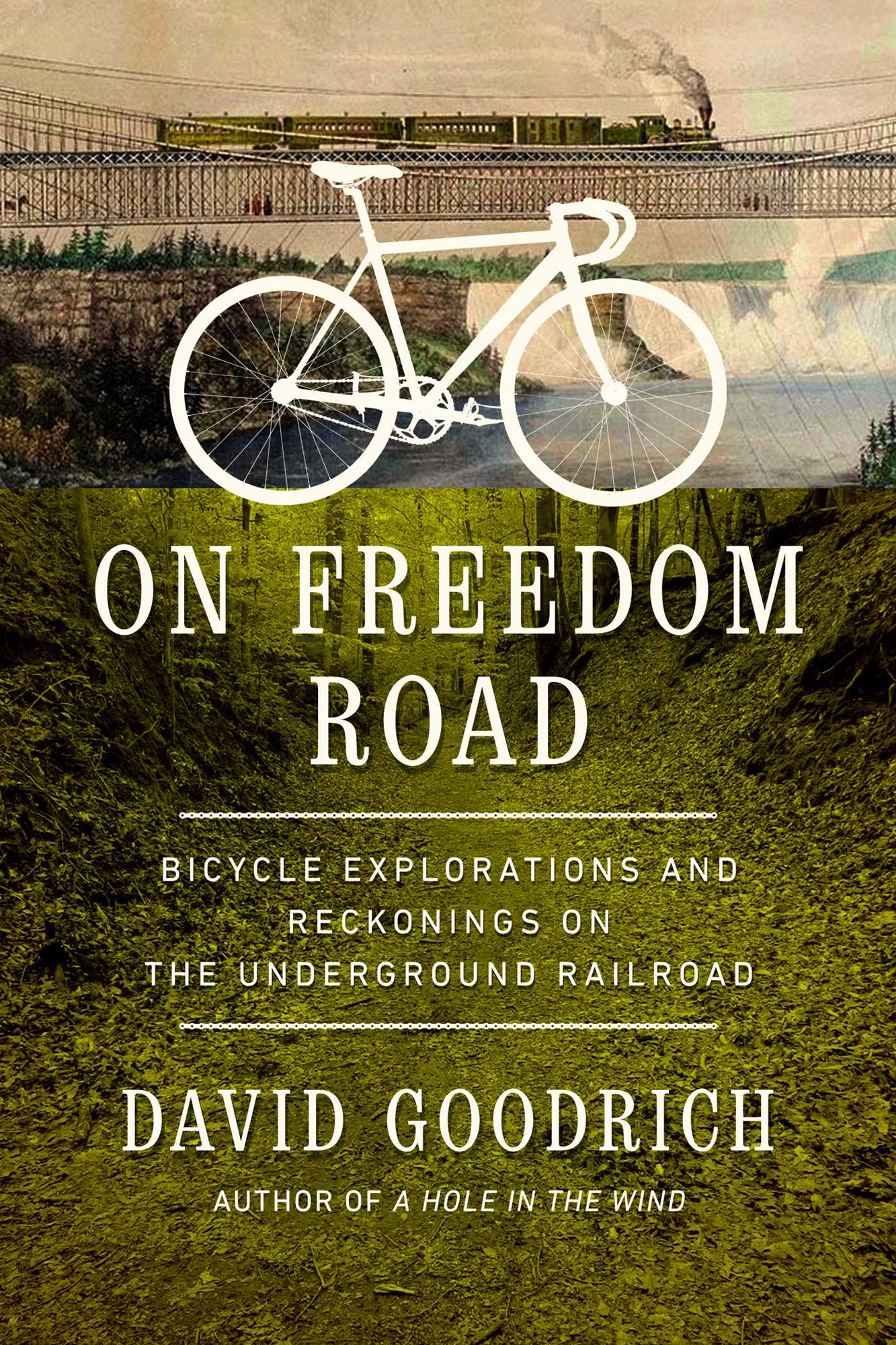Contents
Guide
On Freedom Road
Bicycle Explorations and Reckonings on the Underground Railroad
David Goodrich
Author of A Hole in the Wind
For Concetta
Love, best friend, editor, mom, nonna
For Charlie, Mason, Lena, Evie, and Marius
May your paths in life be full of adventures
A Note on Language
T he reader will note some particular word choices in this book, and here Ive been much influenced by Paul Stewart and the Underground Railroad Education Center in Albany, New York. It might seem curious that the word slave doesnt appear except in direct quotations or contemporary usage (e.g., slave ships). Regarding the subjects of this book, slaves are not who they were; slavery is something that was done to them. So they are referred to here as the enslaved, and those who asserted property rights are referred to as enslavers. Similarly, referring to those making a break for freedom as fugitives implies the legitimacy of the legal system that supported the institution of slavery; freedom seekers seems a better choice.
Black is capitalized throughout the book, while white is not, following the convention of the Associated Press, the New York Times, and various other media. The Times notes that white doesnt represent a shared culture and history in the way Black does, and also has long been capitalized by hate groups.
1 Benches by the Road: The Ride, the Underground Railroad, and a Search for Sacred Places
I was only looking for a place out of the wind. In May 2011, eleven hundred miles into a bicycle trip from the Atlantic to the Pacific, a cold, hard headwind left me tucked down on the handlebars all morning. The water tank on the horizon announced the next town on the road: Vandalia, Illinois. An Open sign beckoned on the side of an old church, whose basement housed the Fayette County Museum. I stepped in, peeling off layers of clothing as I began to warm up. The expansive room was a crowded collection of furniture, display cases, and artifacts. After I wandered through displays with musty smells of faded fabric and old paper, the curator offered to show me a few favorite objects. She handed me a heavy brass ring, so big that I needed two hands to hold it. On the side, engraved in elaborate script, I read:
Belle
J. W. Goslee
Anchorage, Jefferson County, Kentucky
Thats a slave collar, she said. I took in a little breath.
Correspondence with the museum curators some years later revealed questions about the authenticity of the collar. But it didnt matter for me that day. I began to think about an invisible northbound stream of people seeking freedom, and the wheels began to turn.
I recalled an earlier journey, to the other side of the Atlantic. On a visit to England seventeen years ago, my family and I traveled to the border with Wales to find Goodrich Castle, home of one of our ancestors, according to family lore. With many of the walls destroyed in a siege long ago, it was a fixer-upper, to say the least. We stayed in nearby Bristol, a historic seaport where John Cabot embarked in 1497 as the first European to reach the mainland of North America since the Vikings. Wandering into Bristols British Empire and Commonwealth Museum, I came upon the story of another Bristol sea captain who sailed on the brig Sarah some three centuries later. His name was John Goodrich. In 1789, he embarked from England as a captain on the Middle Passage.
I stepped back from the exhibit for a moment. Oh. Bristol had been one vertex of the infamous Triangle Trade: manufactured goods to Africa; enslaved people on the Middle Passage to the Americas; sugar, cotton, tobacco, and wealth back to England. The people of Bristol are well aware of this legacy. During Black Lives Matter protests in 2020, a statue of Edward Colston, philanthropist and slave trader, was pulled down and rolled through the city streets into the harbor.
John Goodrich kept good records. The British National Archives holds his trade book, documenting how many kegs of gunpowder and yards of cloth would make up the price for one young boy.
Im not the first nor the last to discover a monster in my familys past. But the story at the museum pointed to how we are all tied into this institution of slavery, sometimes to a degree that inspires more than a little discomfort. The history of slavery in America is a pervasive part of the history of America, and every citizen has a connection, in some way, to this legacy. John Goodrich brought enslaved people across the ocean. Perhaps then I could discover how some of their descendants later brought themselves to freedom.
Theres a certain perilous lure to the Underground Railroad for white folks like me. Id rather believe that my ancestors were busy heroically sheltering freedom seekers on the way north than captaining slave ships.
The Underground Railroad had little to do with tunnels or secret compartments in old houses. It was a network, a spiderweb of routes and people and information by which freedom seekers could escape the enslavers and their agents, helped along through various safe houses. Some branches werent even on land; the bustling port of New York offloaded many clandestine refugees. Records were by necessity rare, as the keeping of logs was hazardous. But we do know that the Underground Railroad was primarily a phenomenon of the North and Upper South.
By riding the routes of the Underground Railroad, I couldnt hope to understand what the freedom seekers endured, leaving families behind and being hunted over hundreds of miles. But I hoped that by riding along their paths, by being out in the weatheralbeit in safety and with assured food and shelterI might get closer to the people who walked these paths, and to their descendants, and perhaps find a way to tell some of their stories. Clint Smith, who wrote of landmarks central to the history of slavery in How the Word Is Passed, noted The physical place, the land people come and stand upon, is an entry point to a much broader history, of which any single location is but one piece. On my journeys, I found myself often in familiar placesNew Orleans and New York, Buffalo and Philadelphiabut I began to see them from a dramatically different perspective, that of desperate people from many years past.
Traveling the Underground Railroad by bicycle brings a slow tempo. In many ways, the country Id traveled a thousand times was different: closer, experienced more nearly at the pace of the freedom seekers. A journey by bicycle also brings a certain feel for the land, different from other ways of getting around. A runner will know every hill along the route. A cyclist, in turn, comes to know watersheds and drainages, and it becomes easier to see how the land shaped the people. For example, from a bike its easy to see how the flatlands along the Ohio River held danger for people on the run, for this was the domain of the slave-hunting gangs. Shelter lay in the hills away from the river, in the remote Quaker villages and quiet, hidden safe houses. Further south, riding on the levees along the Mississippi up from New Orleans, one can feel the pulse of the great river and imagine the flatboat that brought a young Abraham Lincoln here.
I find that these places triggered memories, research, transformations. The places where people stood are gateways, silent opening doors.



